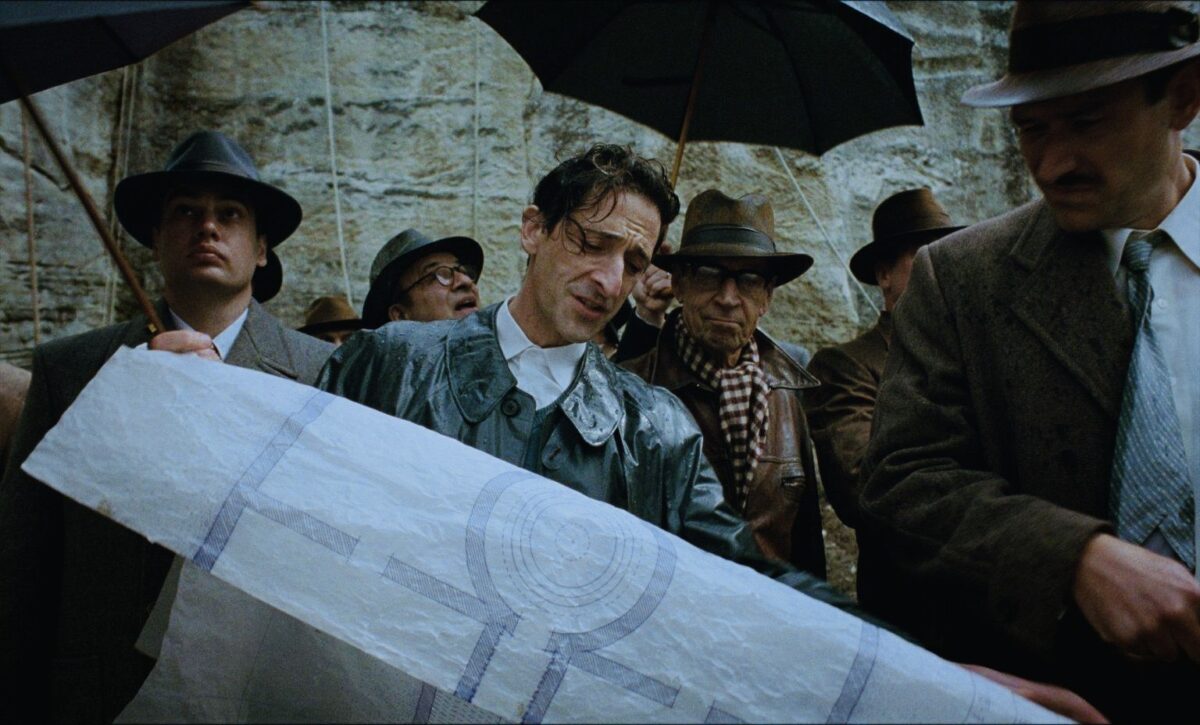The last movie I saw starring Adrien Brody was The Pianist, which was released in 2002. Directed by Roman Polanski, it related the harrowing story of a Jewish pianist, Wladyslaw Szpilman, who survived the Holocaust in Nazi-occupied Poland.
Turning in a brilliant performance as Szpilman, Brody deservedly won the Academy Award for best actor. The film itself was immensely moving. When I told my wife about it after the press screening, tears welled up in my eyes.
I remembered my reaction when my younger daughter’s boyfriend invited us to see The Brutalist, in which Brody portrays Laszlo Toth, a fictional Holocaust survivor from Hungary who gradually renews his life in the United States as an architect.
Although Toth is a figment of a fervid imagination, he may well be modelled after such renowned architects as Louis Kahn, Marcel Breuer and Mies van der Rohe.
Ably directed by Brady Corbet, with a captivating script co-written by Corbet and Mona Fastvold, this dark and compelling drama unfolds mainly in Philadelphia and environs from 1947 until 1980. This was a heady period during which America established itself as the world’s preeminent power and Toth burnished his talents as a first-rate craftsman.
Toth, as passionately portrayed by Brody, is a force to behold. Although he was brutalized and traumatized by antisemitic persecution, and has been separated from his wife since the war, he has not lost his zest for living.
In one of the earliest scenes, he frequents a crowded bordello, where he is pleasured by a prostitute. Shortly afterward, in another absorbing scene, he greets his American cousin, Attila (Alessandro Nivola), with a ferocious hug.
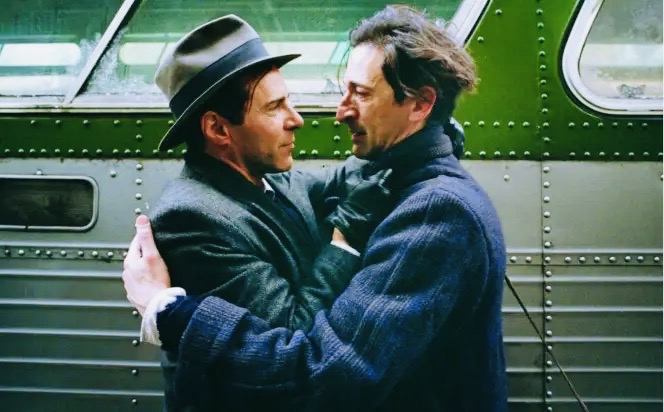
Three hours and 35-minutes long, with a 15 minute intermission, The Brutalist is a cinematic marathon, yet it moves along at a languid pace, as if time is irrelevant. Despite its inordinate length, it hardly feels burdensome, which is plainly a tribute to the stark and arresting cinematography, the vivid script and the stellar performances of Brody and the rest of the cast. Brody speaks English with a distinct Hungarian accent, and when needed, he speaks fluent Hungarian.
Presented as an epic, the film is anchored by several themes: the immigrant experience in America, the meaning of Jewish identity, and the tension between creativity and compromise. They mesh seamlessly.
The Brutalist gets underway as a passenger ship carrying Toth and an assortment of European immigrants reaches its destination at Ellis Island in Manhattan, the gateway to America since the late 19th century.
The iconic Statue of Liberty, a symbol of hope and renewal that greets new arrivals, is rendered upside down by the cinematographer. The meaning of this distorted image is open to interpretation. Could it be that Toth will face a myriad of obstacles before he succeeds in America in his chosen profession? Certainly, Toth is determined to put the past behind him in his quest for acceptance and normalcy in his new homeland.
Attila, the owner of a modest furniture store in a drab corner of Philadelphia, welcomes Toth and generously provides him with a room on the premises. He also gives him a lesson in American values. Attila and his Catholic wife have no children, but his shop, Miller & Sons, is so named because Americans like family-owned businesses, he explains. America is supposed to be a melting pot of cultures and religions, yet Attila has converted to Christianity to try to fit in. So much for the promise of tolerance and diversity in America.
Although Toth does not make a show of his affinity with Judaism, he is Jewish to his fingertips. In periodic scenes, Toth observes the sabbath in a synagogue, a white and blue prayer shawl around his shoulders. This is a man who has not abandoned his faith.
The film draws an indirect connection between Toth and the Jewish people in a brief but vital scene during which David Ben-Gurion, the first prime minister of Israel, ushers in the birth of Israel in Yiddish-accented Hebrew.
The camera constantly pans on Toth’s nose, a Semitic protuberance lacking any beauty. His large and ungainly nose seems like an indicator of his status as an outsider in a mainly Christian society. When Attila’s wife mentions his nose in passing, Toth lies, claiming it was shaped by an accident.
Apart from Toth and Attila, the most prominent figure in the movie is Harrison Lee van Buren (Guy Pearce), a self-centred, repressed and articulate millionaire with an aristocratic presidential name. Having made his fortune in industry, he now lives on a palatial estate in a suburb of Philadelphia. As Van Buren, Pearce is simply superb.
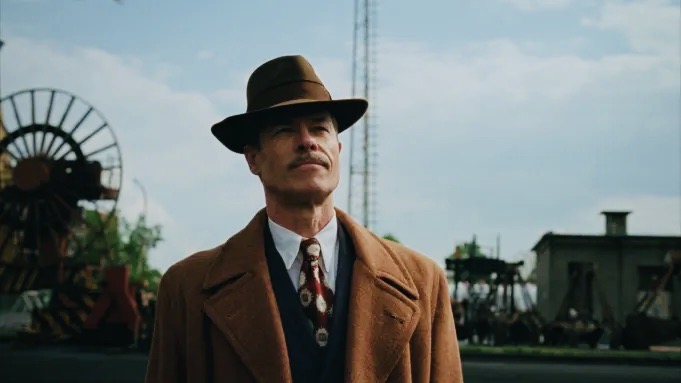
While Van Buren is away on a trip, his son, Harry (Joe Alwyn), hires Attila and Toth to refurbish his father’s grand library. Van Buren hates the restoration and flies into a juvenile rage, prompting Attila to evict Toth from his property.
Driven into a shelter, Toth becomes a common laborer, his aspiration of fulfilling the American Dream having been shattered. Toth, too, indulges in his heroin addiction.
Like a bolt out of the blue, Van Buren suddenly reappears. Projecting friendly vibes, he informs Toth that his redesign of his library has elicited a round of plaudits. As they converse, Van Buren hands him a copy of an old magazine containing an article about Toth’s eminence as a Bauhaus architect in pre-war Europe.
At this point, Van Buren invites Toth to design a community center in honor of his late mother, and he humbly accepts the commission.
Much to Toth’s amazement and appreciation, Van Buren enlists his Jewish lawyer to obtain entry visas for his wife, Erzsebet (Felicity Jones) and her niece, Zsofia (Raffey Cassidy), both of whom are still in Hungary. When they finally reach the United States, Toth learns that they have been physically and emotionally damaged by the war.
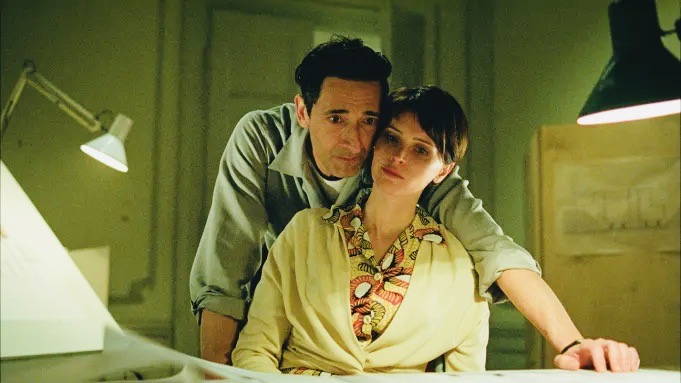
As Van Buren’s construction project proceeds, he and Toth form a bond enhanced by conversations that, Van Buren gushes, are “intellectually stimulating.” Their improbable relationship comes under strain after the emergence of disagreements between Toth and the stodgy construction foreman. The temperamental side of Toth’s personality appears here. At this fraught juncture, Harry lashes out at Toth, saying he is merely tolerated.
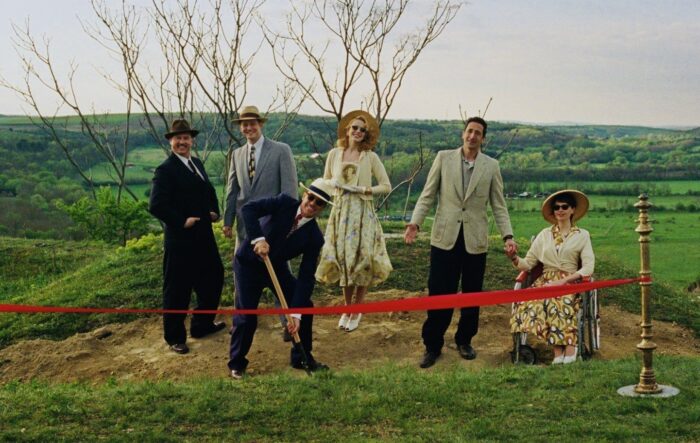
Meanwhile, Van Buren’s relations with Toth crumble in a mountainous region of northern Italy, where Van Buren intends to purchase slabs of Carrara marble for his community center. Their clash unfolds with a shocking suddenness.
The film is never less than intriguing and riveting in the first 90 minutes or so, but it loses some of its momentum in the second half as Toth comes into his own as an architect in corporate America.
Despite these lapses, and in spite an incongruous upbeat sound track that saturates it toward its denouement, The Brutalist stands out as a mature, engaging and discerning work.
